COVID-19 has created a labor market that contact centers and BPOs were previously unprepared for. With unemployment levels spiking and an influx of new people to the industry, recruiters are dealing with 10X the number of applicants per role than they were 12 months ago.
Contact centers have evolved quickly over the last decade, transforming from an industry that simply required agents to answer easy customer questions on the phone, to dealing with multiple online transactions that require call agents to handle a myriad of complex tasks, simultaneously.
Not to mention, hiring for contact centers is different from regular hiring, as everything is done at scale. And when the number of seats to be filled spikes overnight, due to circumstances such as Covid-19 or onboarding new clients, recruiters have to be able to scale up and down on demand.

77%
of call centers are anticipated to grow throughout 2021, with the majority of employees working from home.
Source: Deloitte Consulting LLP
So how can you set up a successful contact center volume hiring strategy?
We’ll dive into the topic and cover all aspects of high-volume recruitment in contact centers, from the main challenges to the specific assessments to use when screening candidates and the technology to adopt for streamlining your processes.
What’s in?
What is high-volume hiring in contact centers?
While there is no specific number that stipulates when hiring reaches high volume levels, when we talk about mass recruitment in contact centers, we use our clients as examples, with yearly applicant volumes ranging between 5,000 and 320,000 or even more.
Therefore, we define mass hiring as needing to recruit a high number of candidates in a very short time frame. Or when there is a consistently high demand for new talent, such as the demand contact centers are experiencing now with the pandemic. Some contact centers, pre-COVID, were hiring 6,000 people quarterly, and now they need to onboard this number monthly.
So it doesn’t matter what your candidate volume is, per se; when you’re in the BPO or contact center space, the challenges of mass recruitment exist at every level.
How is high volume recruitment different from regular hiring?
Why can’t you simply take your existing recruitment process for regular hiring and apply it to contact center mass hiring?
Because if your recruitment process still relies on recruiters carrying out manual tasks, unless you increase the headcount of your HR and recruitment team when you need to scale up hiring, you’ll be wading through a backlog of resumes from now until forever.
In high volume recruiting, you’re dealing with the challenges below.
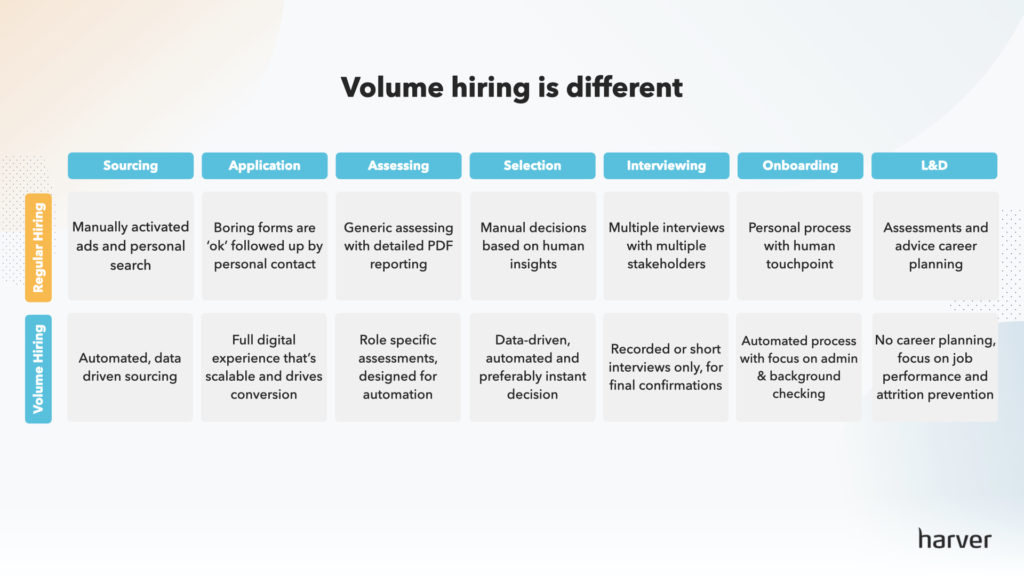
Higher volume of applicants
The truth is, high volume recruiting is for filling entry-level roles with a low barrier to entry and not so many requirements, making them an attractive prospect for a large number of applicants. That’s what makes volume hiring tough.
High volume recruiting means dealing with a higher volume of applicants; some of them are looking for their first job, as they’re just entering the workforce, while others are switching industries as a result of Coronavirus layoffs.
In regular hiring, when you’re looking to fill just one position, you might be sifting through hundreds of applications to whittle down the numbers. When you’re hiring 6,000 contact center agents each month, that might mean you’re sifting through 600,000 applications.
Do you have the time or resources for that? Not if you’re relying on manual processes.
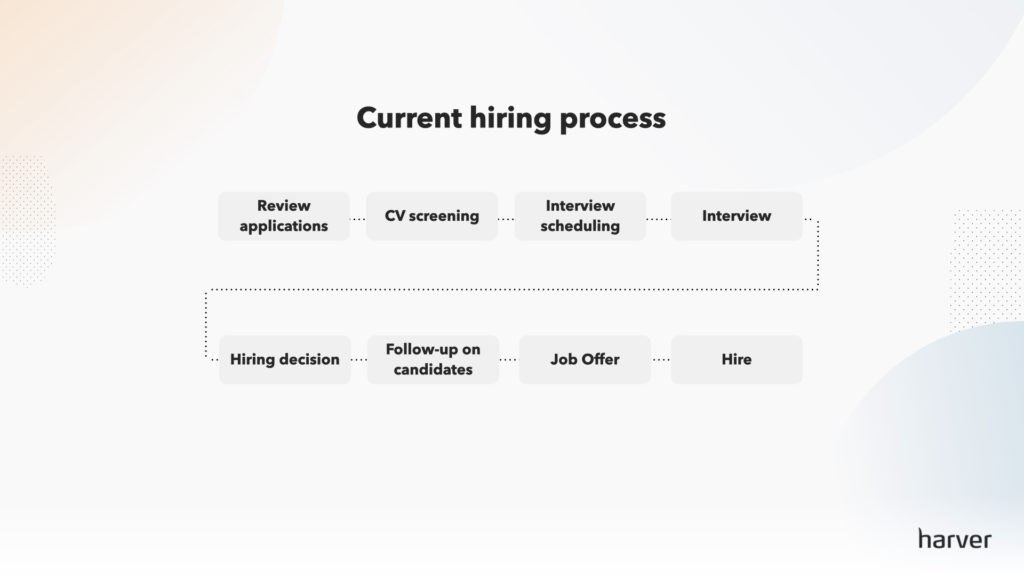
Think about the numbers – if it takes you 10 minutes to manually review and phone screen just one applicant, think how many lost hours you’re racking up when you’re doing this for hundreds of thousands of applicants. And that’s just one step in the recruitment funnel.
Need for standardized, scalable processes
In order to fill your seats with the best candidates available, you need to have a strategy in place that enables you to source the best applicants, contact them and schedule interviews in a timely manner, and select the candidates who fit your company culture and vacancies the best.
This needs to be a standardized, repeatable process, that can be scaled up and down upon request. Also, your recruitment strategy needs to ensure consistency in selection criteria, which is quite challenging when you have multiple recruiters and each of them has different quality standards.
In regular hiring, recruiters can dedicate more time to screening candidates and assessing their skills, but in high-volume hiring, this process is lengthy and often biased. Thus, contact centers dealing with volume recruitment need processes that can be automated, for increased efficiency.
We’ve detailed the topics of process efficiency and recruitment automation for contact centers in the articles below.
Higher costs and time to hire
When you’re recruiting at scale, everything is bigger. Including costs.
For a company that has 50 employees, we know that employee attrition rates can cost north of $100,000, annually. Now imagine what that number could look like for the BPO and contact center industry.
For a contact center with roughly 10,000 employees, if your employee attrition rate equals the industry average (which currently stands at 2-3X the national average, at 30-45%), and employee turnover costs $2,500, you’re looking at a yearly loss of $1m+.
And it doesn’t just cost you in monetary terms either: according to a recent survey from Fidelity National Information Services, the average time to hire for a customer service representative for contact centers, is 38 days.
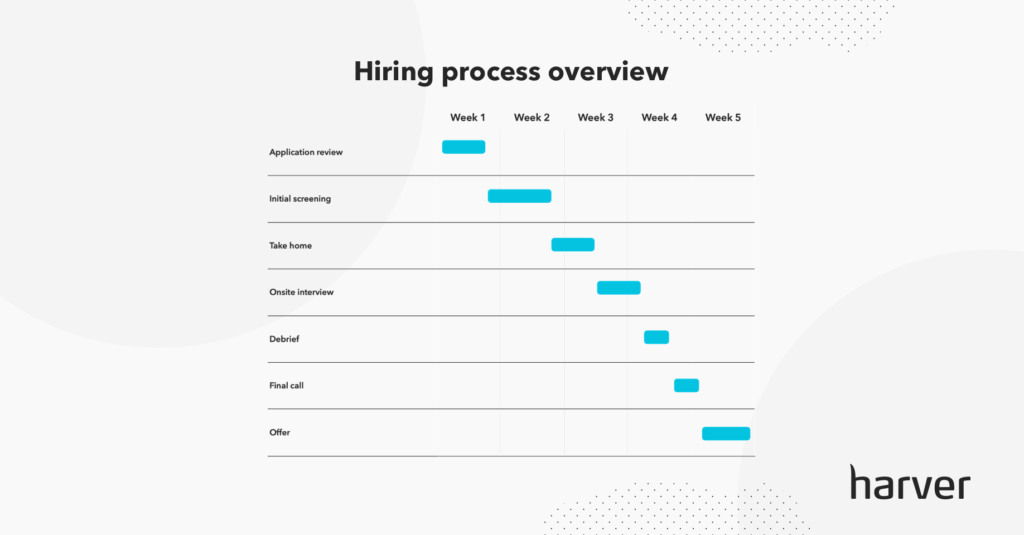
Lengthy processes are causing contact centers to lose top talent to competitors, as candidates lose interest in a job if it takes more than 10 business days to hear back from recruiters. This results in poor quality hires and high employee turnover rates in the long run.
Many contact centers chalk this loss up as part of doing business – customer service is a tough industry after all. But this doesn’t have to be the norm for your contact center.
Our clients, such as NexRep, who operate at scales considerably larger than this, have realized they can avoid these unnecessary costs by simply improving their recruitment process.
Need for accurate data insights
In order to prevent costly mishires when hiring at volume, you need accurate data insights to guide you. When you’re working at scale, everything needs to be data driven. And you need this data to be easily accessible, easy to understand, and interpret.
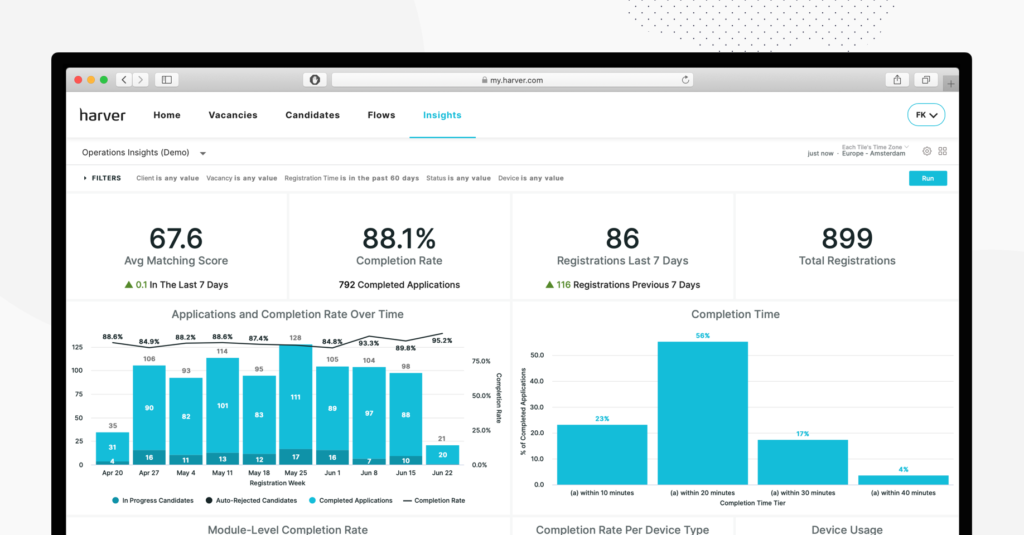
Regardless of how strong your candidate pool is, or how effective your hiring methods are, without the right metrics continually feeding back data informing your hiring process, you aren’t hiring efficiently.
If you don’t have control over your hiring process when you’re hiring a few hundred candidates, you risk losing complete control when you try to scale your hiring up. And once you’ve lost control, it’s very hard to regain it again, or to improve your hiring process.
Having accurate data insights makes it easy for you to identify issues and resolve problems quickly, releasing bottlenecks and delivering a smooth, timely, and efficient candidate experience.
Harder to select the right candidates
The customer service industry is a notoriously tough industry with a high turnover of employees for a reason – it takes a certain type of person with a particular skill set to carry out the role successfully.
For many contact center roles, past experience is not a good predictor of future success in your role. We said above that the contact center industry has changed a lot over the last decade, therefore experience a candidate might have had in a phone support role a few years ago, might be irrelevant when you’re recruiting chat agents, for example.
When you’re recruiting contact center agents for multiple customers, with different needs, simply hiring someone based on previous experience doesn’t mean they’ll be able to deliver in the role. With so much available talent coming into the contact center and BPO space from outside the industry now, just because someone has never worked as a contact center agent before, doesn’t mean they won’t make a great hire.
When you hire for specific skills and personality traits (call-type matching), instead of adopting a vacancy-driven approach, you can better predict future success, than when you rely solely on someone’s previous job title.
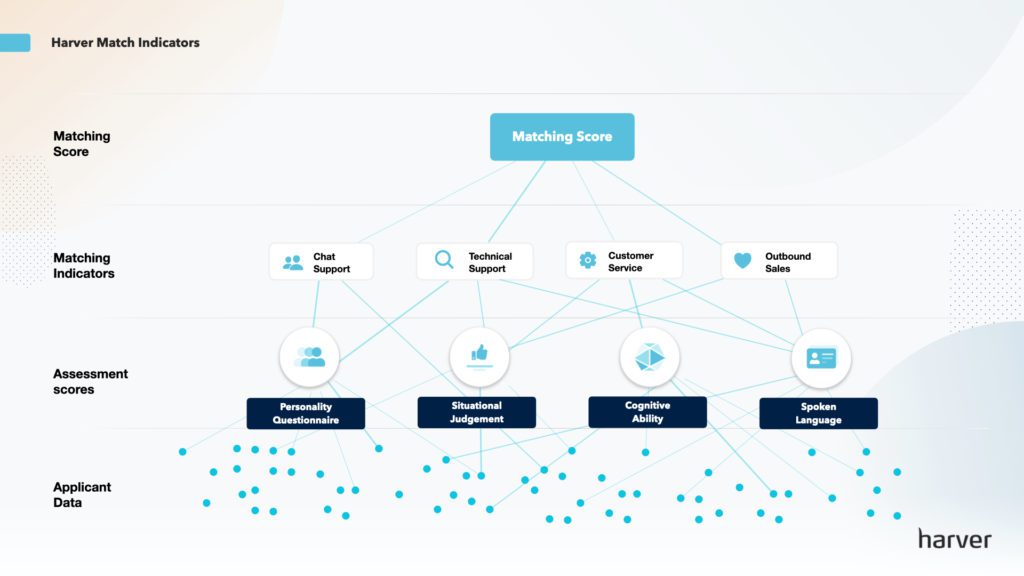
We’ve detailed the topic of call-type matching for contact centers in the webinar below, where we’ve covered the most important trends shaping volume hiring recruitment in contact centers this year.
What types of roles are contact center recruiters hiring for?
We’ve talked about how the contact center industry has changed, and these are the types of roles contact center recruiters are now hiring for:
- Call agent
- Team leader
- Center manager
- Live chat agent
Call and live chat agents are the most common roles that BPO and contact center organizations are recruiting for en masse. And although these roles seem quite similar, the customer service tasks they need to perform actually require very different skill sets.
Of course, all customer service agents, regardless of medium, need to boast a similar disposition – polite and empathetic, good at following procedures, and always friendly.
How does live chat support differ from providing customer service over the phone, though? Most obviously, live chat works via written communication. As such, agents need to clearly and concisely convey information via the written word. In contrast, phone agents must excel at verbal communication, so the toolbox used by them is different.
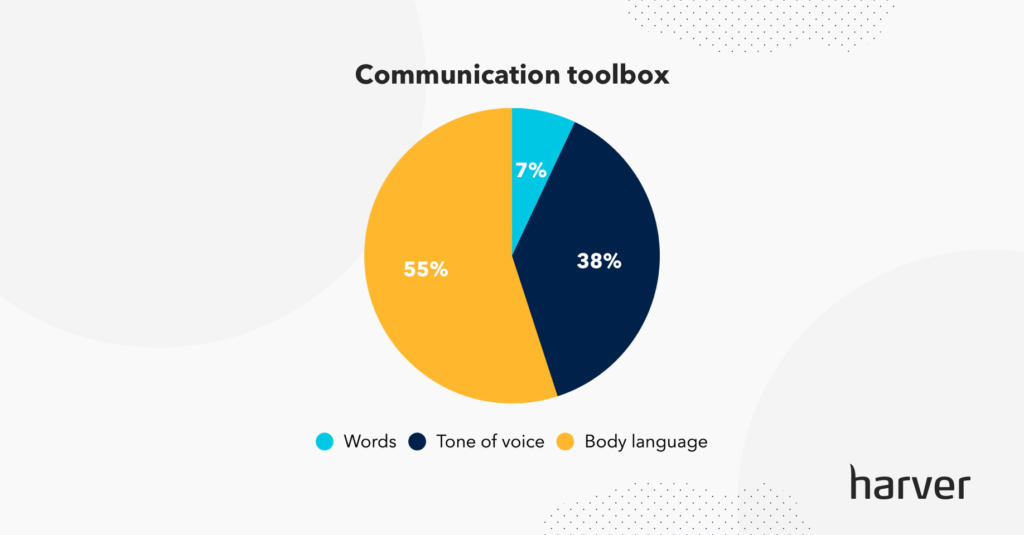
Another key difference is that phone agents will only speak to one customer at a time. Live chat agents, on the other hand, may often multi-task and handle several conversations at once. Thus, high-quality live chat agents need to possess exceptionally good reading comprehension, be good at grammar, spelling, and punctuation and have an understandable and straightforward communication style.
We’ve covered the differences between these two roles, as well as the best practices for recruiting top-performing chat agents, in the playbook below.
Hire better live chat agents, at scale.
Dive into the rise of live chat, the skills of top-performing agents, and how to best assess them to reduce attrition and guarantee top-notch customer service.

What does the recruitment process look like?
In a contact center that still relies on manual recruitment processes, the traditional process to recruit contact center agents typically looks like this:
- Advertise the role
- Review applications
- Screen resumes
- Schedule interviews
- Interview
- Make hiring decision
- Send out job offer
- Hire candidates
- Onboard
This is a multi-faceted approach with numerous processes. It’s costly, time-consuming, manual, and wildly inefficient. It prevents you from hiring the top talent and it doesn’t deliver a great candidate or recruiter experience either.
Yet, when you automate the steps that don’t require real-time human judgment, you can end up with a process that looks more like below.

So instead of doing everything manually, you can automate steps such as the screening of CVs or applicant profiles, the pre-employment assessments that check if candidates have the right skills and fit the company culture, as well as the interview scheduling part.
Moreover, you can automate the follow-up steps too, so in this scenario, the only tasks that recruiters need to focus on are the face-to-face or virtual interviews, and the hiring decision.
Recruitment automation speeds up your workflow by quickly moving suitable candidates through your hiring funnel while rejecting those that are a poor fit. A faster workflow means fewer lost candidates and lower hiring costs, so you increase the likelihood of employing top-quality talent while keeping operating costs low.
If we zoom out and look at the technology needed for automating the volume hiring processes, a potential solution could look like below. Here, most of the steps are taken over by Harver, but the depth of automation can vary, depending on the specific needs of a client.
- White paper
Before you continue!
Don’t forget to grab your free copy of our white paper on contact center volume hiring in 2021. Learn about:
-
The challenges currently shaping the contact e
center recruitment space - How employers can navigate the new remote-first reality, and the role of technology in a future-proof recruitment process
- The four building blocks of a fully digital recruitment process

What does the applicant journey look like?
The majority of attrition in contact centers comes down to unclear job expectations, which highlights the importance of a well-designed candidate experience.
The applicant journey is akin to a customer browsing in a shop. Before the applicant decides that they want to be a part of your team, they want to know that the company is the right fit for them. It’s therefore the perfect moment to teach them about your brand, the work environment, and enable them to experience the good and the bad parts of the role, before joining.
There are multiple touchpoints along the way where you want to give candidates a positive experience:
- Your job adverts
- Your career site
- Your social media pages
- The job application itself
- Communication during the process, etc.
To find out what candidates experience when they apply for a role with you, why not go through the application process as if you were an applicant? It’ll provide you valuable insights you wouldn’t otherwise be privy to.
From there, reimagine the process and think of what needs to be improved to turn it into an engaging experience. Or take a look at how other big brands have redesigned their application process in partnership with Harver.
By designing a candidate experience that offers applicants a realistic job preview, you allow them to self-select out of the role, if the requirements and the realities of the job don’t meet their expectations.
Here’s, for example, an application flow that includes a situational judgment test (SJT) for a contact center role. This type of pre-employment test exposes the candidate to both routine tasks and critical incidents, such as angry customers requiring assistance. Candidates can select the best and the worst answers from a list of options.
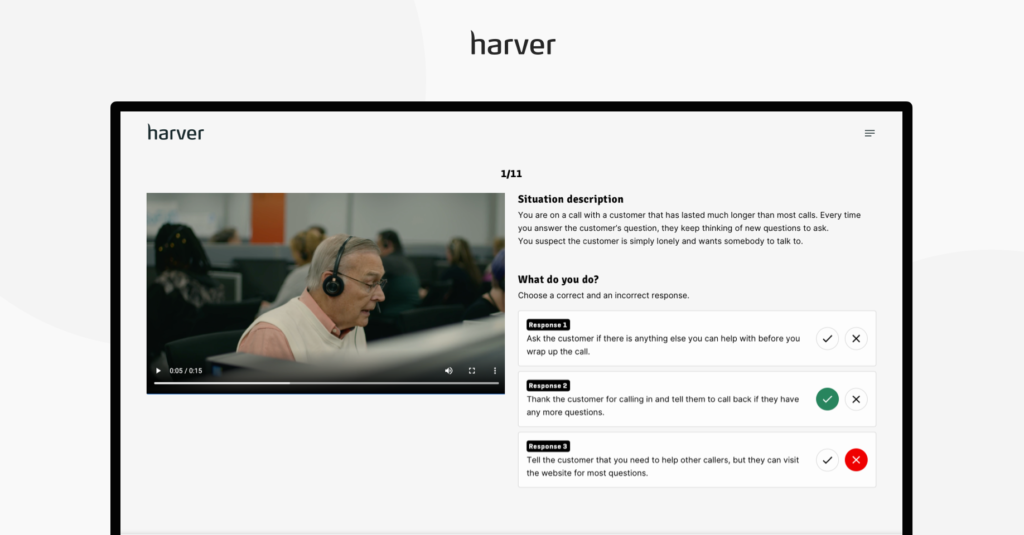
This assessment can be combined with a personality test or a cognitive ability test for example if you want to evaluate more characteristics. Also, the applicant journey can incorporate a company video that showcases your company culture and gives candidates a sneak peek behind the scenes, showing them what’s it’s actually like to work as a contact center agent.
As candidates go through the application flow, the system assesses their skills and characteristics in the back end, providing you with matching scores for different call-types.
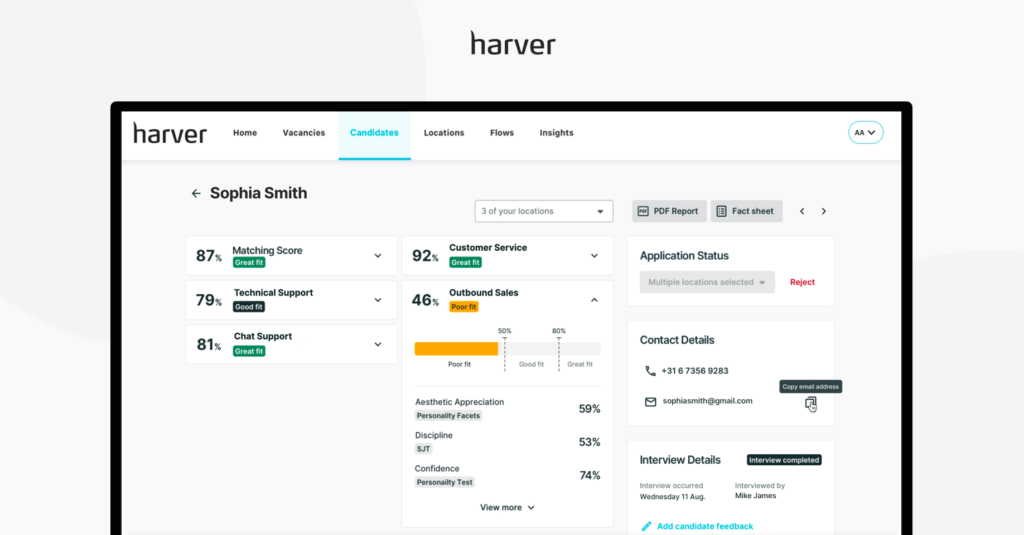
If you’d like to see this module in action, you can do so below.
Experience our best-in-class Live Chat Assessment first-hand!
Perfect for remote hiring, our live chat assessment makes it easier than ever to hire live chat agents. Candidates experience the job, while you get actionable data to drive hiring decisions.
What metrics are important in contact center high volume hiring?
We’ve mentioned before that your hiring process needs to be data-driven, but what metrics do you need to keep track of in contact center high volume hiring?
- Cost per hire
- Time to hire
- Quality of hire
- Employee attrition rates
- Employee turnover
- Customer satisfaction survey
- Net promoter score
- Employee satisfaction score
Time to hire measures the number of days between the moment a candidate applies (or gets sourced) to the moment the candidate accepts the job. This metric is relevant for measuring the efficiency of your recruitment process.
And learn 15 ways to reduce your Time to Hire!
Learn the tactics top recruitment teams in your industry leverage to reduce Time to Hire. Stop losing candidates to competitors, improve your company’s bottom line revenue and candidate experience.
Cost per hire is the economic value placed on the total financial investments an organization makes to attract and recruit new employees. It should be noted that cost per hire should not be used to determine the success or failure of an organization’s recruiting abilities. Instead, it should be used as a benchmark for the organization’s ongoing recruitment activities.
Quality of hire measures the value that new hires bring to an organization. In other words, this recruiting metric is used to evaluate how much a new hire contributes to the organization’s long-term success, based on their performance and tenure at the company.
In addition to measuring how successful a new hire becomes, the quality of hire can also be used to measure the success of the company’s recruiting efforts as a whole.
We’ve detailed the topic in the articles below.
What are the main challenges faced by high volume contact center recruiters?
Before we dive into streamlining the mass recruitment process, let’s sum up the challenges faced by HR and TA teams hiring for contact center entry-level roles.
High attrition rates
Employee attrition is the number one challenge faced by recruiters. Employee turnover in contact centers is on average 30-45%, that’s between 2-3 times the US average. And the main culprit behind this number is often the misaligned expectations of the candidates.
Long time to hire
Time to hire is another big challenge. With an average TTH of 38 days, when every contact center is on a recruitment drive currently, you’ll lose the top talent in your pipeline to competition. And that’s because candidates lose interest in a job when faced with lengthy processes.
Inefficient processes
For recruiters, a manual hiring process is bad, but a decentralized, non-efficient process with multiple tools for every step of the way is even worse. This results in a poor experience for both the recruiter and the candidates. Candidates want a user-friendly and consistent experience.
Bias in recruiting
A manual process results in bias in recruiting. When recruiters hire based on resumes instead of skills, they mis-hire, which only feeds the vicious cycle of hiring poor quality candidates and losing them soon after onboarding.
Moreover, resume-based recruitment makes it challenging to maintain a diverse workforce. For this, you need a selection process that fosters diversity, of gender, age, race, background, and so on.
Data collection and analysis
A fragmented hiring process that incorporates multiple platforms and tools is often linked to a lack of clarity when it comes to data collection and analysis. Without proper data to back up their decisions, it’s almost impossible for Headquarters to know what levers to pull to streamline their operations.
How do you handle high volume recruiting to solve these challenges?
The short answer is: by digitally transforming your recruitment process to remove bottlenecks, automate manual tasks, and provide both recruiters and candidates with an awesome experience.
Digital transformation in contact centers and BPOs means identifying and integrating dedicated technology and data solutions to fundamentally change how you hire at scale, to solve your recruitment challenges, and deliver value by increasing productivity, efficiency and output.
Our four-pillar approach provides an easy-to-follow framework for BPOs and contact centers looking to digitize their volume hiring processes. It focuses on the following building blocks:
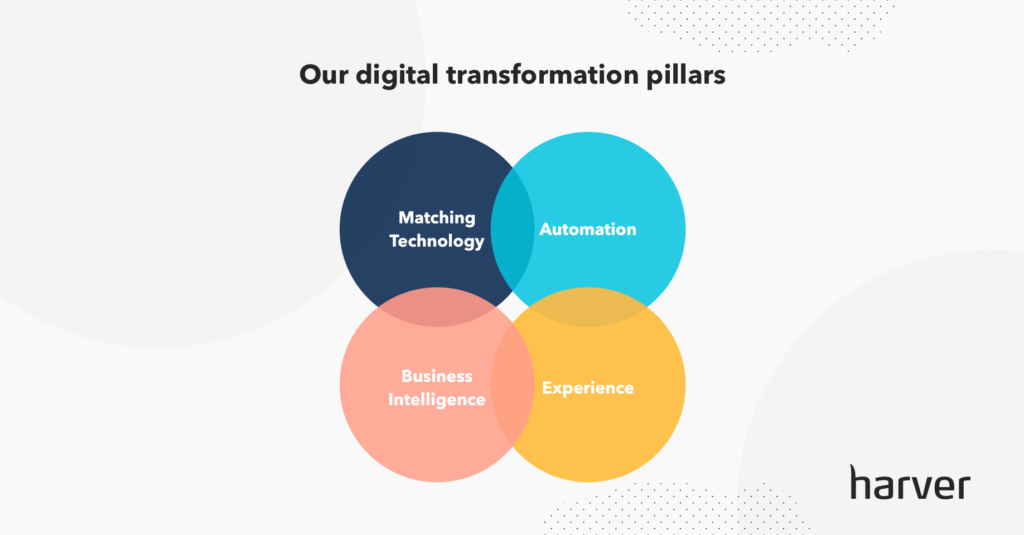
Automate manual proceses
As we’ve seen, in a contact center yet to undertake a digital transformation, numerous processes tend to be manual. And the main issue with this traditional approach is that it isn’t streamlined, is manual-heavy, lengthy, and time-consuming. It isn’t scalable, it doesn’t predict future job success and it doesn’t deliver consistently high-quality hires.
Thus, when you undertake a digital transformation of your contact center recruitment, you need to consider the full hiring cycle, taking into consideration both the recruiter and the candidate perspective.
We work with major contact centers from all over the globe, and while the depth of automation varies from one client to another, virtually any step in the hiring process can be automated. Below you can see an example.

The automation goes beyond the candidate assessments and can cover the sourcing, selection, interview scheduling, and even the onboarding stages, through work-from-home system diagnostic tools.
Use matching technology
No matter the type of contact center role that you’re looking to fill, you should always start by identifying the key characteristics leading to success in your specific organization. From there, you can build a matching framework to help you find qualified people for the role.
We recommend this approach – referred to as call-type matching – instead of a resume- or vacancy-driven hiring process because we know that in this vertical, a candidate’s past experience is a weak predictor of future performance.
Call-type matching is a new approach to volume hiring, which matches the best-suited applicants across multiple opportunities and roles. The matching is still specific for contact center types of roles, but instead of locking applicants into specific jobs, you take a talent-driven approach.
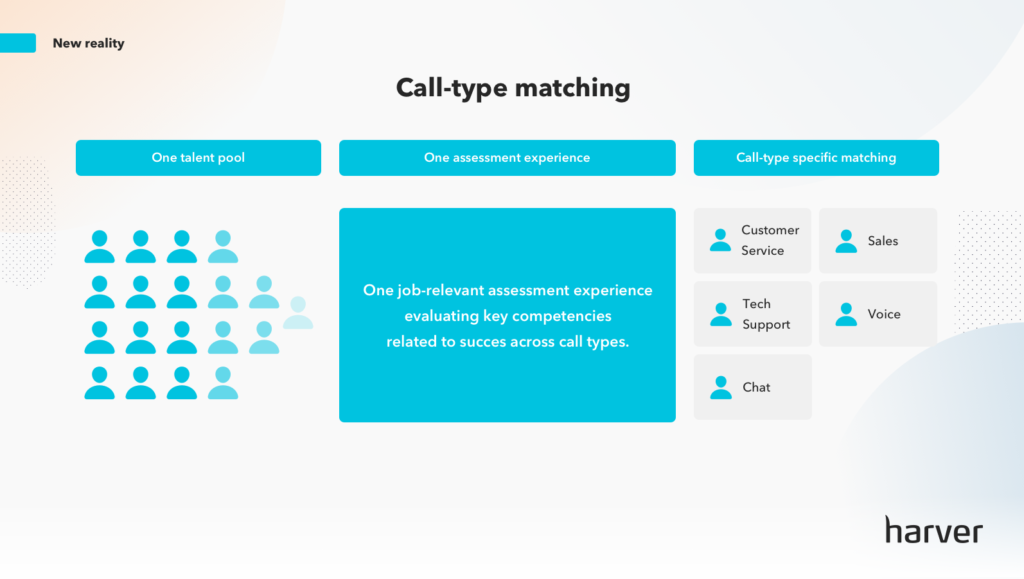
This increases the likelihood that you’re placing the right person into the right role and helps you avoid missing out on great talent that maybe was applying for a different vacancy but showed up to be a great fit for a technical support agent.
Centralize data collection and analysis
To make the most of your recruitment data, you need to be able to extract actionable insights in an easy manner, and this means that you need a consistent and reliable way to collect and analyze it.
Our platform offers real-time data through a series of out-of-the-box dashboards, but you can create your own reports as well if you want to track specific KPIs.

Among others, we enable recruitment teams to easily interpret candidate experience metrics, matching scores – both as aggregated data and per individual candidate profile, D&I metrics, sourcing insights, and so on.
Offer an amazing candidate experience
If the misaligned expectations of candidates and their poor understanding of the roles are causing such high attrition rates in this industry, it’s clear that this part of your hiring strategy shouldn’t be overlooked when building your digital transformation plan.
For contact centers, we typically recommend using the live chat support simulation assessment, as this not only gives the applicant a realistic job preview but also helps recruiters assess the most important skills needed for a contact center agent.
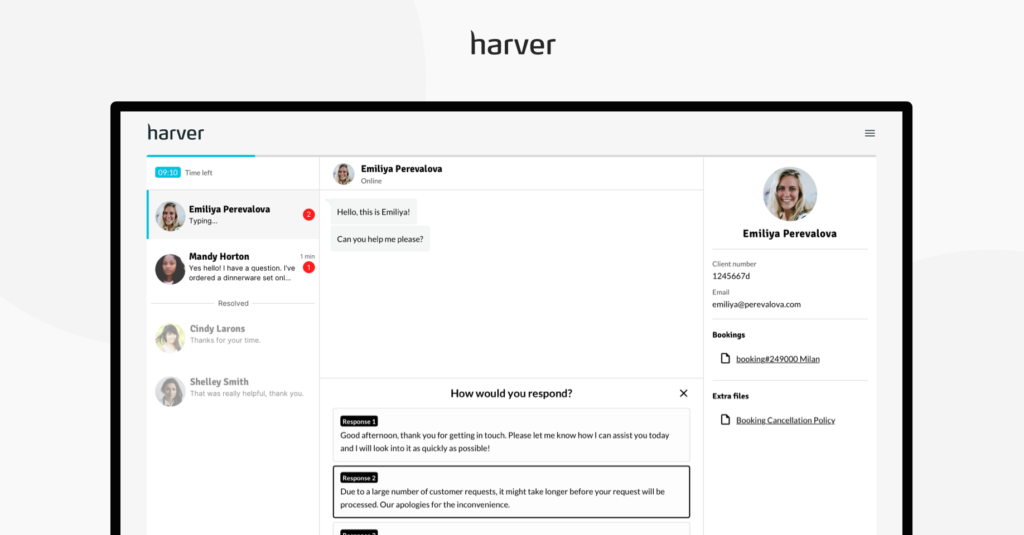
Coupled with custom company videos that showcase the culture and work environment, and with situational judgment tests, such pre-employment assessments offer an experience that’s more engaging than the classical resume-based application.
Next steps
To address your volume hiring challenges and optimize your processes, you need both a solid recruitment strategy and the right tools to implement it.
At Harver, we help contact centers digitally transform their recruitment process by offering them an end-to-end hiring solution that solves the major challenges of volume hiring.




